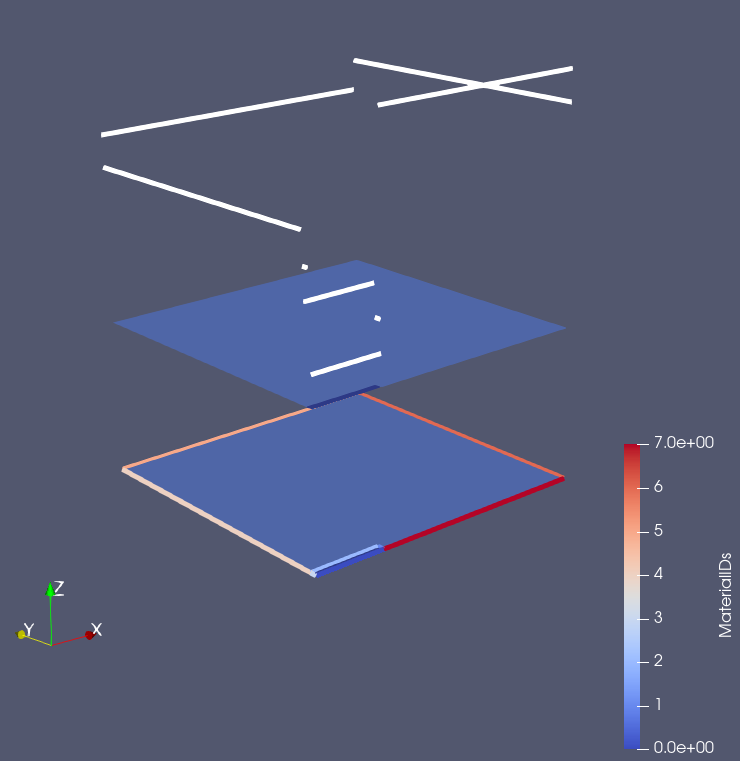GMSH2OGS
Introduction
Meshes generated with Gmsh can be converted to OGS meshes, in particular to VTU
file format.
Currently, the only supported Gmsh format is 2.1, which can be specified for
example with the command line flag -format msh2 when executing gmsh.
Usage
Gmsh writes all elements (unless specified otherwise) including the lower
dimensional elements, usually model boundaries.
Whereas for OGS we separate the so called “bulk” mesh and the boundary (or
subdomain) meshes.
GMSH2OGS options -e (--exclude-lines) and -b (--boundaries) control
whether the line elements are removed or written in separate files.
Example
A 2D-mesh with two physical groups (MaterialIDs) was generated with Gmsh. It also includes the outer boundary and inner boundary line elements.
Input files and results
All files are stored in Tests/Data/MeshLib/:
- the Gmsh generated mesh
A2-gmsh.msh, - and the corresponding result files
A2.vtu, and the boundary meshesA2_0.vtutoA2_7.vtu.
Running GMSH2OGS
GMSH2OGS creates different meshes from the same input depending on the -e
and -b flags; the results are shown (z-translated) in the figure below.
GMSH2OGS -i A2-gmsh.msh -o A2.vtu- Conversion without any additional flags yields a single VTU file with outer and inner boundaries (line elements) included, shown in the very bottom.
- Adding only a
-eflag results in a single VTU file, now without the line elements. - Adding only a
-bflag gives a single VTU file as in the first case and additional eight files, each containing a line-element mesh corresponding to the physical groups; these are the white lines in the figure, shown again z-translated. - Finally specifying both flags (
-eand-b) produces a single VTU file without the line elements and additional eight boundary (subdomain) files.

This article was written by Dmitri Naumov. If you are missing something or you find an error please let us know.
Generated with Hugo 0.122.0
in CI job 449919
|
Last revision: April 23, 2024
Commit: [PL/LD] Use generic cell average output 3557e29
| Edit this page on